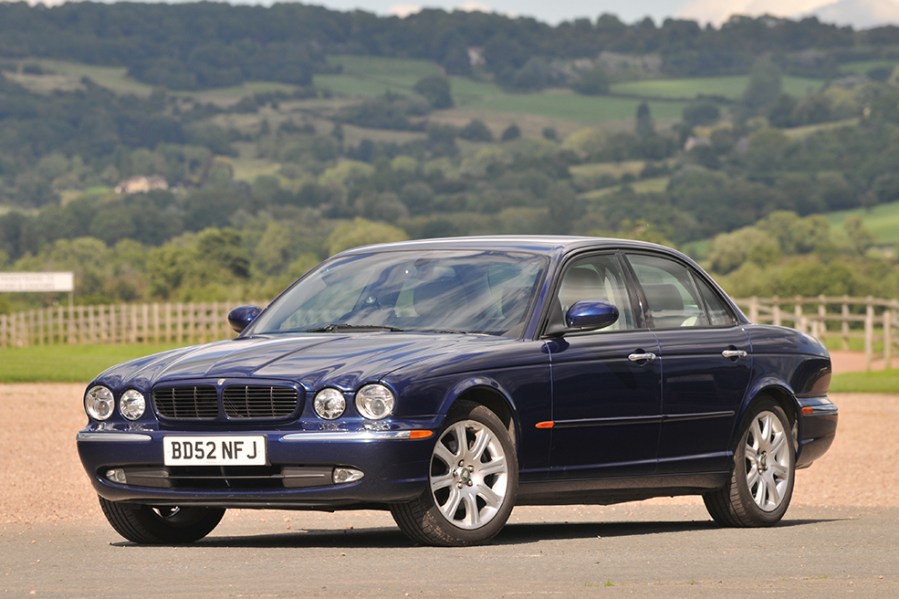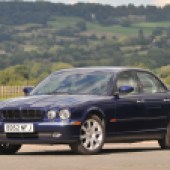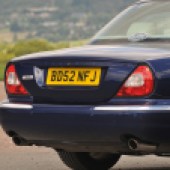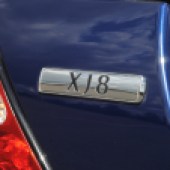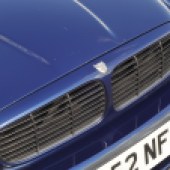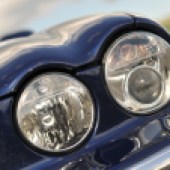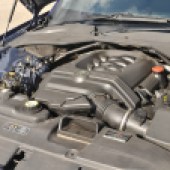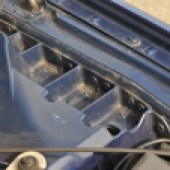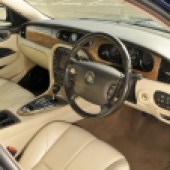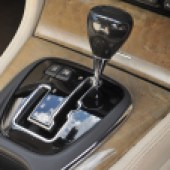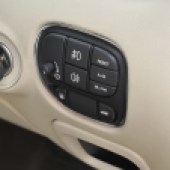The traditionally styled X350-generation Jaguar XJ was surprisingly high-tech under the skin and makes a very practical modern classic
Although the seventh-generation XJ was launched in 2002, development of the car known inside Jaguar as the X350 had in fact begun much earlier, running in parallel to the X-Type. Unlike the Mondeo-based X-Type the XJ boasted some radical technology beneath its somewhat conservative style. Demands for increased interior space meant it would need to be larger than its XJ40-based predecessor, which required a wheelbase stretch to 3034mm but in order to avoid the weight ballooning as a result, the decision was taken to go with a lightweight aluminium construction.
Back then this was a bold step, only Audi having successfully volume-produced an aluminium monocoque saloon car, but with Ford money behind them the Jaguar team managed it.
Unlike Audi and Honda’s use of extruded spaceframes, Jaguar went for a bonded and riveted construction which the firm still uses today, involving the high-tech glue being cured by the heat of the paint oven. It’s strong, too: apparently tests have shown that when two sheets of aluminium glued together in this way are separated, the metal will fail before the glue.
It wasn’t all good though. The lower strength compared to steel was a factor heavily influencing the appearance of the new car, with designer Fergus Pollock pointing out that the need to retain torsional stiffness resulted in larger than average pillars and a high waistline.
In his fascinating book Jaguar Design, former Jaguar designer Nick Hull also points out the rising feature line in the lower half of the rear doors which apparently helps to visually slim the sides of the car.
As for the look of the car, extensive customer clinics held by Ford saw the adoption of the familiar Jaguar face with the sculpted four-lamp front end.
The launch range included the 3-litre V6 good for 240 bhp, the 3.5-litre V8 in 262 bhp flavour and the 4.2-litre V8 in both 300 bhp and supercharged 400 bhp form plus the 2.7-litre twin-turbo V6 in the TDVi good for 204 bhp.
Underneath was found standard air suspension at all four corners and in conjunction with the car’s lightweight build this made it a more capable handler than its size would suggest.
Facelifted in 2007 for the 2008 model year and gaining the X358 designation, the car gained revised grille, mirrors and front bumpers plus the side vents in the wings, while the 3.5-litre was dropped for the UK market. It would be replaced by the radically different-looking X351 in 2009.
Bodywork
Clearly this is one Jaguar where you don’t need to be worrying about rusting steel bodywork… but having said that, the aluminium construction comes with its own issues. Crash damage has to be repaired using a specific process so do check for signs of major accidents, while you may also find signs of reactive corrosion where the paint bubbles up in localised patches.
The front subframe is steel and can corrode, although this is difficult to check with the engine undertray in place.
The aluminium outer panels are also more easily dented than their steel equivalents, making these cars more vulnerable to supermarket trolleys and careless car park door opening. Take a step back and look down the side for Peugeot 205-style rippled flanks.
Certain colours can also suffer with the paintwork fading at different rates on the bodywork and the plastic bumpers, but this can often be sorted with a ‘mopping’ session using a professional buffing wheel and compound.
Like the X-Type and S-Type, the plastic outer headlight lenses can suffer with road debris and UV light and will become opaque, affecting light output noticeably. If caught in time, this can be polished out and if it’s too bad for normal T-Cut type polish, then one of the restoration kits will work. Failing that, have the bodyshop buff the lenses when they do the bumpers.
On pre-facelift models, the retaining insert for the headlight washers can fail, allowing the jet to fall inside the bumper, which will need to be removed to retrieve it.
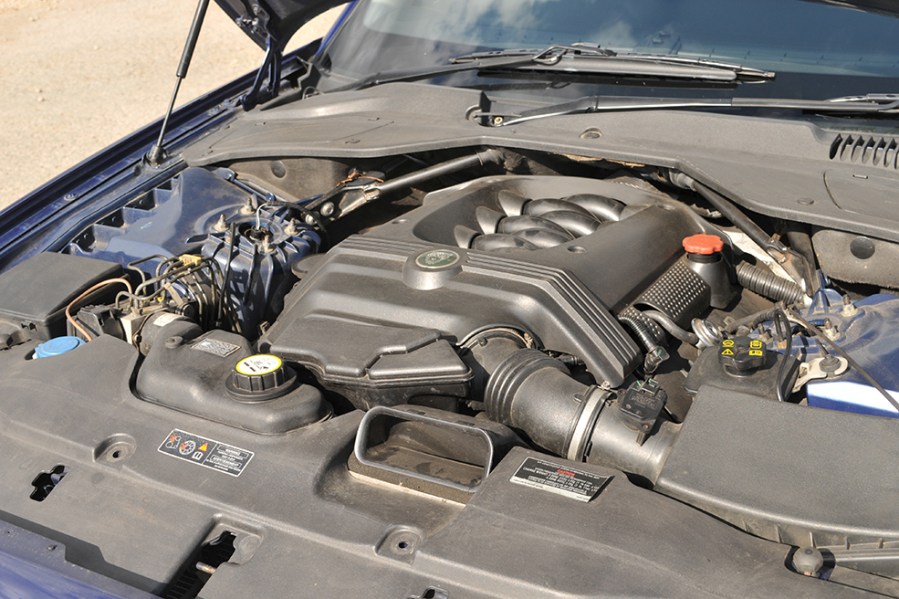
Engine and transmission
If it’s reliability you’re after then the petrol engines are the way to go. The V8 engines in the X350 are all the later 4.2-litre version of the AJ-V8 which is well regarded and really doesn’t have any Achilles’ Heels. Knock sensors are known to fail, resulting in poor performance and economy and replacement on the V8 can be a DIY job but does involve removal of the inlet manifold.
The V6 is similarly reliable, being derived from the Ford unit and also found in the X-Type and S-Type. Oxygen sensors can often fail and can be hard work to remove, while other issues include oil leaks from the sump area and the crankshaft end seal, but both can be sorted easily enough.
The V6 engines can also suffer with the radiator swelling at the bottom and it’s worth checking this before it lets go entirely.
The diesel on the other hand needs approaching with caution: specialists warn that overfilling the engine oil can cause back feeding of the turbo returns – where the engine will run on its own oil until it fails – and also hamfisted oil changes which see an incorrectly fitted filter damaging the non-return valve.
It’s also been suggested that these engines can suffer from main bearing failure from diluted or contaminated oil.
On the plus side, many specialists reckon the engine, which is also shared with the S-Type and Discovery, can be a good unit if it’s maintained correctly and there are many high-mileage examples around.
There was no manual option for the X350 generation and specialists suggest that the life of the six-speed ZF automatic can be usefully extended by changing the fluid every 60,000 miles and using the correct ZF Lifeguard oil and a new filter. This requires dropping the gearbox sump pan, but should the Torx bolts round off in the process, Jaguar supplies replacements with larger heads.
Oil leaks from the bottom of the gearbox can often be due to the sleeve where the electrical wiring enters but this can be swapped when changing the filter.
Surging on a light throttle at 30-50mph can generally be cured by a control software update.
Suspension, steering and brakes
The front end uses twin-piston calipers, with sliding single-piston calipers at the rear, with the XJR using Brembo kit. Sticking calipers aren’t uncommon on little-used cars, but can either be freed off if you’re lucky or swapped with a reconditioned unit. The rear parking brake is electric and so the correct diagnostic tool is needed to perform a disc or pad replacement.
ABS problems are common and a failed sensor is a simple DIY job to swap. If that doesn’t cure the problem though, problems at the rear end are likely to be down to the reluctor ring on the driveshaft having corroded and swollen up so the sensor can no longer read the signal. The cure is a replacement halfshaft and it’s really a workshop job.
The air suspension gives a comfortable ride, although newcomers to the car may be surprised to find it slightly crashy when compared to something like a hydropneumatic Citroën.
As far as the air suspension goes, height sensors are a common failure but are straightforward DIY to change, whereas failed shock absorbers mean a new strut: £1000 a corner from Jaguar but around £100-£180 used. The main air pump is a common fail point but a used part is around £150.
Elsewhere, the rear lower suspension arm bushes can wear, the solution being a complete lower arm which can be changed at home. Upper bushes can also wear on higher-mileage cars and again a complete arm is the solution.
A rattle from the bottom damper bush is a simpler fix at around £14 a corner and a tool is available to press the bushes in and out without removing the strut.
Movement or rattling felt while tapping the brakes sharply at low speeds can identify worn lower front arm bushes or failed anti-roll bar drop links. The drop links are a simple job, while the bushes can be changed a few times before the arm needs replacing but a new assembly with bush fitted is also available.
Wheel bearings are also a common failure and are around £100 front and £50 rear. To avoid the need for a press, a used front hub with good bearing can be had for around £60.
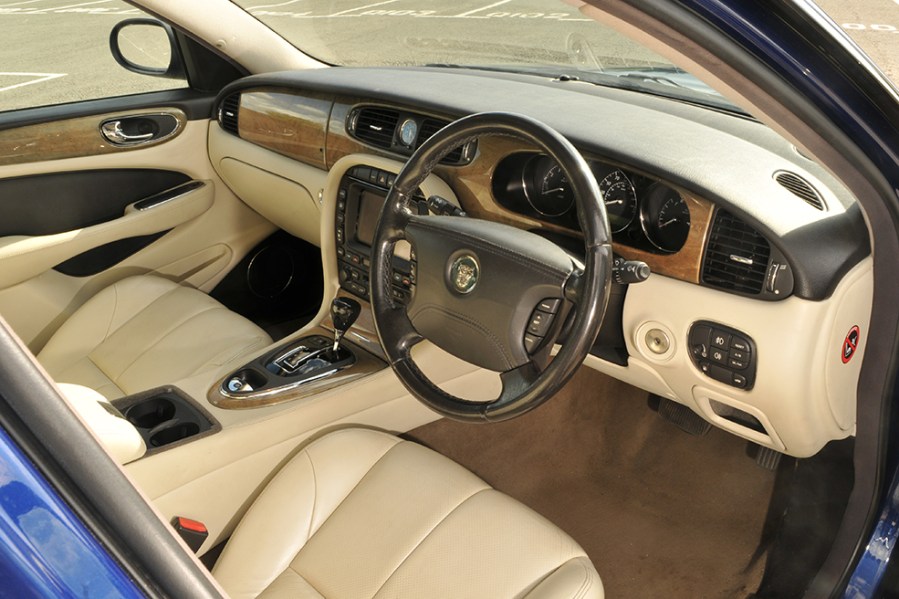
Interior and trim
The trim and fittings in these cars is of high quality and other then the usual wear and tear to the seats it should last well. Tired-looking leather can be transformed by using one of the colour-matched leather recolouring kits as sold by firms like the Furniture Clinic.
The door locks and latches can be an issue and although the doors can still be operated manually, this can become more of an issue if the lock fails when it’s double-locked. The answer is to get it sorted as soon as the central locking starts to misbehave and used locks are available for around £50. While the door is apart, specialists recommend fitting a new window regulator as these are a common fail point.
One rather more major issue is the heating/air conditioning system. This has a dual-output option for separate temperatures on each side and if it starts to misbehave, expect some hassle. If you’re lucky, back-flushing the system might sort it out, but if not then a partial dismantling of the dash might be needed to access the heater matrix. Straightforward but a lot of fiddly labour.
If the heater fan starts to have a mind of its own then it’s down to the resistor pack which can be replaced.
Jaguar XJ (X350): our verdict
It may have been the last of the traditional-looking Jaguars, but the significance of the ‘X350’ generation of XJ saloon both to the automotive industry in general and Jaguar in particular is hard to overstate. Indeed, it’s largely the same vehicle which was still in production until very recently, albeit with a modernist reskin and electronics update.
We paid very little for our XJ8 project car: think around the three grand mark and you’ll be close. Yes, we’ve had to sort a few niggles along the way but these cars are surprisingly DIY-friendly if you’re prepared to take the plunge and there’s a huge amount of knowledge out there from clubs, plus the independent Jaguar specialists who are these days more than familiar with the cars.
Yes, these were expensive cars new and in some respects – tyres for example – they still carry the running costs of a £50,000 car; you can’t expect to run one on a shoestring but they can be surprisingly affordable. “But what about fuel?” I hear you asking at the back. Well, personal experience tells me that if you drive them gently then you can see 34 mpg on a long run, which makes the V6-powered XJ6 suddenly less appealing.
If economy is your thing then there is of course the diesel, but as you’ll see the PSA-developed unit has a less than stellar reliability record. In many ways that’s a shame since the smooth diesel does tick all the boxes for most owners and in fact offers more torque than the normally aspirated V8. If you can find one with a blue-chip history from a loving owner then it’s quite possibly the way to go.
As with many modern classics of this era, prices are all over the place with the newer cars still depreciating and the older or more miley cars near the bottom of the curve. The V6 models are your entry ticket: think just under £2000 for a 3.0 SE showing 165,000 miles, rising to around £4000 for a nicely specced example showing 80,000 miles.
You can expect to pick up an early 4.2-litre V8 for around £3000 with a few dashboard warning lights to keep you busy and 100,000 miles showing, rising to £4000 for the nicer cars and £5000 if you want to see fewer than 100,000 miles. The XJR starts at around £5000, with the top whack for pre-facelift cars being around £9000. The diesel starts at around £3000 for miley examples, rising to around £7000 for sub-100k miles and closer to £9000 for the low-mileage examples.

